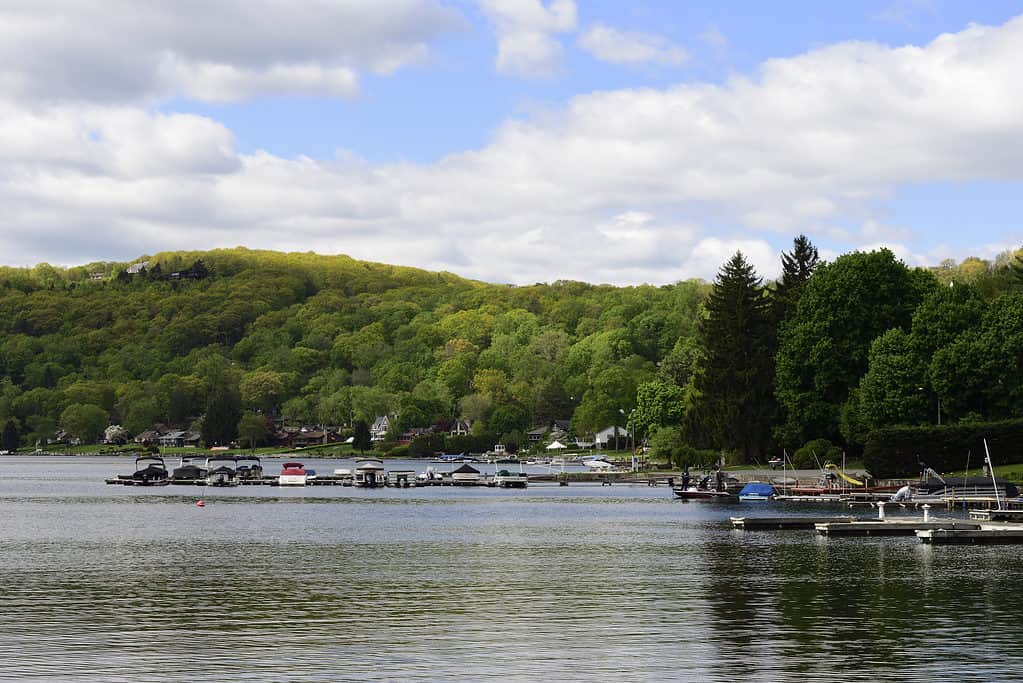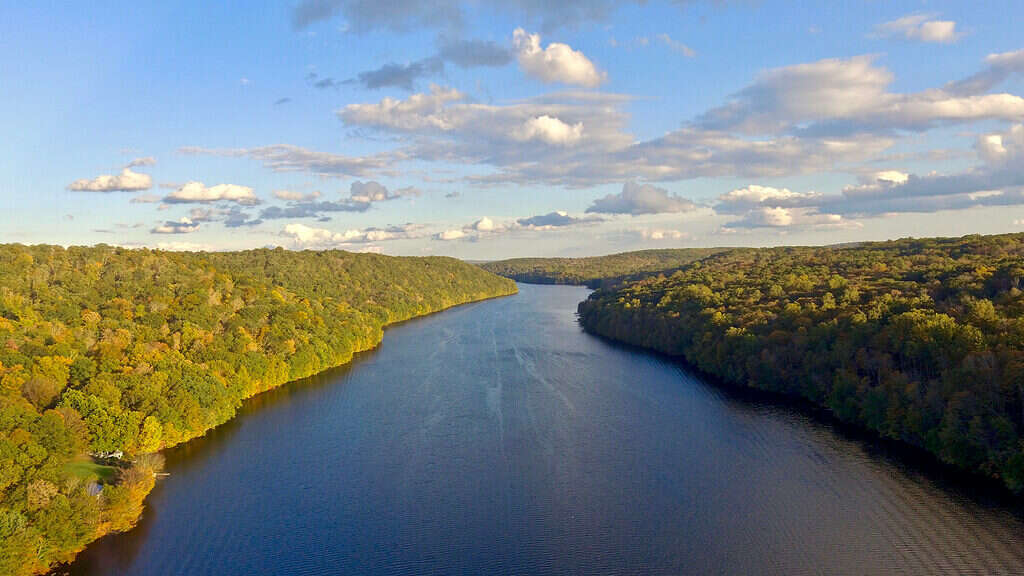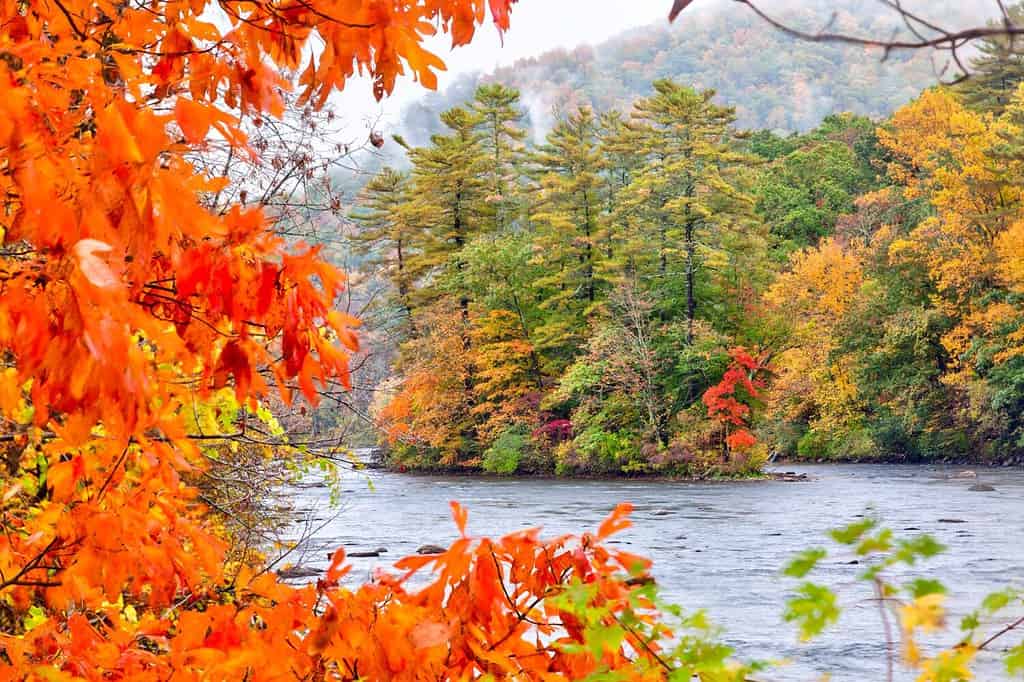Before delving into the topic of discovering Connecticut’s oldest man-made lake, it’s essential to begin by examining the history of Connecticut. This historical context will provide valuable insights into the state’s development and the significance of its landmarks.
Quinatucquet or Quinnehtukqut
Have you ever wondered how Connecticut acquired its name? Have you ever wondered who was behind the creation of Connecticut’s oldest man-made lake?
The name “Connecticut” comes from the Mohegan word “Quinatucquet” or “Quinnehtukqut,” which means “on the long tidal river.” The Mohegans, an Algonquian tribe, had inhabited the upper Thames River Valley, which we now know as Connecticut, for countless generations. Their history in this region dates back thousands of years. It wasn’t until 1614 that the first European, Dutch explorer Adriaen Block, ventured into the upper Thames River Valley. This marked the initial European contact with this ancient land and its native inhabitants. He named the river “Versche Rivier (Fresh River).”
The English Settlers
In 1633, a significant event occurred in the history of the Connecticut colony. English settlers, having established themselves in the region, made a historic decision. They opted to rename both the river and the colony itself. Their choice for this renaming was “Quinatucquet” or “Quinnehtukqut,” a word drawn from the Mohegan language. This decision marked a pivotal moment in the region’s history, solidifying its identity with a name that reflected its roots. They also slightly changed the meaning from “on the long tidal river” to “beside the long river.” The exact process by which “Quinatucquet” or “Quinnehtukqut” became “Connecticut” is unknown, but it likely happened gradually over time.
The name “Connecticut” now refers to the state of Connecticut, one of the original thirteen colonies of the United States.

Hartford, Connecticut, is a large and vibrant city.
©Sean Pavone/Shutterstock.com
Oldest Man-Made Lake in Connecticut
Who Named It and How Was the Name Chosen?
In 1926, the Connecticut Light and Power Company authorized the construction of the Rocky River storage basin and dropped the Shepaug undertaking. The reason is the relocation of a considerable length of the Litchfield-Hawleyville Railroad line.
On March 12, 1926, Mr. Joel D. Justine from the U.G.I Contracting Company presented a report proposing a dam on the Rocky River, along with a powerhouse and pumping plant on the Housatonic River. As a result of these two reports, the Board of Directors granted authorization for the project’s construction on July 15, 1926. To avoid favoring any neighboring towns, they named the lake Candlewood Lake.

Chronological Listing of Significant Events Related to Candlewood Lake
1707: The Weantinaug Indians first inhabited the valley where Candlewood Lake presently stands.
1902: Nicholas Staub, a New Milford man, recognized the potential for a larger-scale hydraulic development in the Housatonic River. He purchased an abandoned hine mill that had captured his attention. It was he who established the first Bulls Bridge Station.
1904: The Bulls Bridge hydroelectric power plant was built on the Rocky River.
1914: Nearly one-third of America’s factory machines were driven by electricity.
1917: Attorney Henry Roraback acquired the stock of the Housatonic Power Company located at Bulls Bridge. This company had previously been associated with the New York, New Haven, and Hartford Railroad. Roraback named his company the Connecticut Light and Power Company.
1918: The Connecticut Light and Power Company proceeded to construct the Stevenson Dam on the Housatonic River above the Town of Derby. This dam was constructed to control the flow of the river and generate electrical power.
1922: Initial preparations commenced for a planned reservoir and dam on the Shepaug River.
1926: The Connecticut Light and Power Company initiated land purchases in 1926; by 1930, they had finished the acquisition process.
1928: The Connecticut Light and Power Company established a permanent office in New Milford.
1928 – 1930: In 1928, the Connecticut Light and Power Company acquired only ten parcels, followed by four in 1929 and then two in 1930.
1929: Stark B. Ferris, an amateur lake historian, informed the New York Times that the Weantinaug Indians had been the first inhabitants of the valley. Pioneers established their settlement there in 1707, and among these early settlers was Zacariah Ferris, who happens to be an ancestor of the person mentioned earlier.
Where is the Oldest Man-Made Lake in Connecticut Located on a Map?
Candlewood Lake is located the western part of Connecticut, in Fairfield and Litchfield counties, and is 60 miles away from the New York state border. There are numerous green spaces surrounding the lake, like the Squantz Pond State Park, the Bear Mountain Reservation, and the Pootatuck State Forest as well as the famous Elephant Trunk Flea Market that is only 16.9 miles away in New Millford.
What Happened?
The company purchased land in the valley and constructed several dams to contain the water. The largest at the north end reached a height of 100 feet and spanned 952 feet in width. They commenced pumping water into the valley on February 25, 1928, and by September 29, 1928, the lake had been officially finished, reaching an elevation of 429 feet above sea level.
The city of Danbury and the towns of Brookfield, New Fairfield, New Milford, and Sherman surround Candlewood Lake. It is Connecticut’s largest lake, covering 8.4 square miles, and the Lake features Chicken Rock, a notable spot for lake jumpers.
Its roughly 60-mile shoreline features various tourist resorts and recreational amenities, including golf courses, beaches, and marinas, scattered throughout.
At one point, people described the lake as “one of the most beautiful lakes in the world.”

Candlewood Lake on a peaceful summer morning. Keep reading to discover amazing facts about this man-made lake!
©tmphoto98/Shutterstock.com
Dams of Candlewood Lake
Candlewood Lake features multiple dams. Let’s explore a few of them and learn about their historical backgrounds:
Stevenson Dam
In 1918, the Connecticut Light and Power Company constructed the Stevenson Dam located on the Housatonic River between the towns of Monroe and Oxford. The dam serves the dual purpose of regulating water flow on the Housatonic River and generating hydroelectric power. Additionally, it plays a crucial role in controlling the water levels of Candlewood Lake.
Furthermore, Stevenson Dam, which stands at a height of 125 feet and spans nearly a quarter-mile, features a bridge owned by the Department of Travel. This bridge, positioned 20 feet above the dam, is suspended by 24 concrete piers.

Sunset over the Stevenson Dam in Connecticut. The view overlooks Lake Zoar with the hills of Newtown and Oxford in the distance.
©Swanson B/Shutterstock.com
Shepaug Dam
Workers constructed the Shepaug Dam in 1955 at the North End of Candlewood Lake. The dam’s purpose was to create a reservoir and control the Shepaug River’s water flow. It also controls Candlewood Lake’s water flow.
The Shepaug Dam lies between Newtown in Fairfield County and Southbury in New Haven County. Its wall rises to a height of 140 feet and stretches 1412 feet in length at the top. This wall impounds water from the Housatonic River and the Shepaug River, forming a large reservoir. The main purpose of this pooled water is to generate electricity.

This man-made lake is near Southbury, where the Housatonic River and Shepaug River come together.
©Tarek Ihaddaden/Shutterstock.com
Rocky River Dam
In 1926, construction commenced on the Rocky River, a tributary of the Housatonic River. The dam was completed sometime in the late 1920s or early 1930s as part of the Candlewood Lake Project. This primary dam created the lake by impounding the waters of the Rocky River.
The Rocky River Dam is approximately 100 feet high and spans a length of 952 feet.
Rivers Feeding Candlewood Lake
Candlewood Lake is primarily fed by several rivers and streams in the surrounding area. Some of the main rivers and streams that contribute to Candlewood Lake include:
Rocky River
The Rocky River Dam impounded the Rocky River, creating Candlewood Lake. This marked the first large-scale pumped-storage development in the United States, and the Rocky River serves as one of the primary tributaries feeding into the lake.
The river passes through the towns of Brookfield, New Milford, and Sherman in Connecticut. It spans approximately 13 miles in length and drains an area of about 100 square miles.
The Rocky River is a popular destination for fishing, boating, kayaking, canoeing, and tubing. The River is also home to a variety of wildlife, including trout, bass, and perch.
Housatonic River
Starting at Falls Village, Connecticut, and extending to Gaylordsville, the Housatonic River attracts whitewater paddling enthusiasts. It consists mainly of quick water and Class I whitewater, featuring extended sections of Class II-III rapids. However, an extremely hazardous Class VI section can be found at Great Falls in Canaan (Falls Village), likely unsuitable for paddling. The most perilous yet navigable stretch is near Bulls Bridge, Offering Class V whitewater.
The River is approximately 149 miles (240 km) long, in western Massachusetts and western Connecticut, and feeds into Candlewood Lake. The Stevenson Dam on the Housatonic River helps regulate water flow into the Lake.
The Housatonic River is also a popular fishing destination, with trout, bass, and perch all being found in its waters. The river is also home to a variety of wildlife, including bald eagles, ospreys, and river otters.

Fall season in the Housatonic River in the Litchfield Hills of Connecticut.
©Enfi/Shutterstock.com
Shepaug River
The Shepaug River, spanning 26 miles in northwestern Connecticut, originates in Warren and flows southward through Washington, Roxbury, and Southbury before joining the Housatonic River. The river gets its name from the Mohegan term for “rocky water” and is also referred to as Sheppang, Sheppog, and Shippang. Covering approximately 45,400 acres in western Connecticut, the Shepaug River watershed is notable.
Furthermore, there’s the Shepaug River Trail, a 3.6-mile out-and-back trail located near Roxbury, Connecticut. The Shepaug River is renowned for activities such as whitewater kayaking, rafting, and paddling, particularly the section from Route 341 to Route 67 in Litchfield County, which boasts Class II-III rapids.
Still River
The Still River is another side stream that flows into Candlewood Lake.
More About Connecticut Lakes
You can find more information on Connecticut Lakes here.
Conclusion
Countless individual’s vision, dedication, and relentless efforts transformed the once unforgiving Housatonic River into the majestic Candlewood Lake. Today, we have the privilege of witnessing the realization of their dreams. This remarkable project not only serves as a source of pride but also stands as a vital resource for both present and future generations.
The enduring legacy of Candlewood Lake is measured not only in its beauty but also in the countless opportunities and livelihoods it has provided to the families living in its vicinity. Beyond human inhabitants, it has become a haven for wildlife, enriching the ecological diversity of the region.
Candlewood Lake not only enhances the livelihoods of the people in Connecticut but also plays a crucial role in generating electricity for the state. The Lake serves as a shining testament to what can be accomplished when individuals unite with a shared vision for a brighter future.
Thank you for reading! Have some feedback for us? Contact the AZ Animals editorial team.








